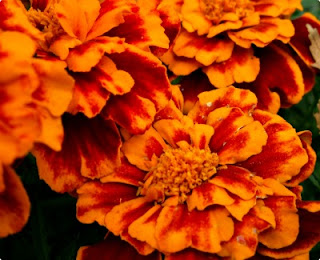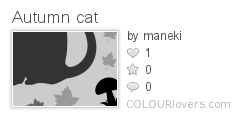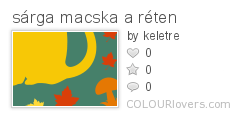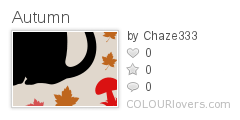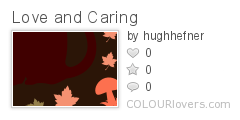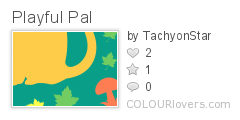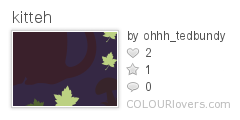Wednesday, 31 August 2011
Autumn in August
These last few days I've realised that the rainy days are no longer cold, miserable summer days, but chilly, wet autumn days. While most of the trees are still green, the horse chestnut has begun to change colour and shed leaves. And the evenings aren't getting darker just because of the rain clouds, but because the days are slowly getting shorter and shorter. It is definitely not summer anymore. Maybe I could still live in that illusion if it'd been sunny: after all we had temperatures over 20 degrees just the other day, but now the days are either rainy or windy -- or both.
It's mostly orange and yellow tagetes and chrysanthemum that are still in bloom around the yard, which emphasizes the autumn colours rather than add to the in places still present, but subdued and sparse, rainbow of summer flowers. Sure, there's still rose and red fuchsias, pink hollyhocks and purple clematis, but it's the orange flower that you see the most of.
I still have summer photos, I wanted to edit and put on the blog and now all of a sudden it's autumn. It came so fast! There's so much I love about the autumn, but I wouldn't have minded a few summer days more. Anyway, this change in weather pushed me to publish some flower and other outdoor photos, which I haven't done in ages. At least that's how it feels. I've gotten behind with summer photos so I don't want that to happen this season as well.
Apart from all the gorgeous colours and many beautiful days of early autumn, the one thing I really like is that it's harvest season. I love going from apple tree to apple tree, collecting the most delicious (well, mostly delicious) pieces of fruit you can find. Nothing tastes as good as fruit and vegetables straight from the plant. We also have a pear tree -- two, but one is no longer producing fruit -- and the grapes in the greenhouse are slowly ripening too.
Maybe I feel that the weather cheated me of the last days of summer, but I'm really looking forward to having a great autumn ahead. I might not feel that way in November -- not so much due to the dull and dreary normal November weather as due to the fact I'll turn 30 then -- but right now I'm looking forward to seeing all the leaves changing, eating rain-wet apples of the trees, drinking hot cocoa and reading good books in a warm room while it's raining outside, smell the freshness in the chilly autumn air, savour the sunny days and just generally enjoying the good sides of autumn. And of cause preparing for and enjoying the bead soup blog party in about two and a half weeks.
Etching mother of pearl, part 2
This is a continuation of yesterday's post about etching MOP with vinegar. This was the last pendant I put in the vinegar bath yesterday, but as I wanted a deeper etch than on the other white pieces, I left it in for almost 24 hours.
Like with my previous attempts to use bleached, white shell, I found it didn't have enough contrast. It's much better than lily-of-the-valley tile and I don't have any obscuring shimmer from the etched areas, but the stiations do make it difficult to see the motif -- unless you hold it in the right angle.
Then I happened to hold the heart up against the light and I saw that the etch was deep enough to create a shadow effect. While the banding still slightly annoying, you can see the floral pattern. Without having to tilt and turn the pendant (as long as it's backlit). So it could be used for, say, an earring. Or some sort of home décor where it'll be illuminated by sunlight in a window or a candle/tea light for example.
I'm now going to see if etching MOP any longer will give better results or not. Looking at this pendant, I'm slightly worried the etch will "eat through" any narrow parts of the motifs. See the stem and how it's just a thin line between the two leaves. (As for the third flower on the right, that's my mistake: I was checking the pendant yesterday and peeled away the sticker in that spot just to see how the ecthing was going and when I put it back, apparantly it didn't adhere as well as berfore and vinegar could seep in under it. So 24 hours be be a more ideal time. I'll know on Friday.
Tuesday, 30 August 2011
Etching mother-of-pearl
These last few days, summer has definitely turned into autumn. While the rain and wind makes it dark and cold outdoors, I've been so inspired by my experiments I've almost forgot the boring, chilly weather (though not fully as I have to run outdoors in the rain every now and then -- and it's given me a soar throat). This is what I'm playing around with right now.
The other day, I showed some pics of my accidental brass etching (remember it?). As I like the result so much, I had to do some research online to see if I could learn something more about etching metal with vinegar. As I did that, I stumbled over something else. Apparantly, vinegar is used as an echant when decorating eggs. Patterns are created using bee's wax, which works as a resist, and then the eggs are submerged in vinegar until the outer layer is removed by this mild acid. Particularly effectful when using brown eggs as the vinegar removes the pigmentation in areas not covered with wax.
That had me thinking. Wouldn't it be possible to etch seashells the same way? Pearls, seashells, egg shells -- they all contain some sort of calcium compound, which makes them porous and sensitive to acids. And we all know about Cleopatra dissolving a pearl (i.e. nacre, mother of pearl) in vinegar to create the most expensive drink in history. I have to try this, I thought while mentally going through my bead stash looking for something -- anything -- made from mother of pearl.
As I didn't have any info specifically on vinegar etching MOP, it was truly an experiment. I'm sure there are others that have done this and written about it online, but I didn't have any how-tos available at the time (in fact, it probably didn't occur to me to google "etching seashell with vinegar"). So I had to figure things out myself. I didn't know how long to let the shell soak in the vinegar or what other types of resists I could use, which would withstand the effects of the vinegar without damaging the MOP (either when applying or removing it). For my first piece, I simple dripped a few drops of wax onto a MOP bead and submerged it in the apple cider vinegar. Eagerly waiting for a result, I got tired as it took much longer than the recommended times for etching eggshell -- and forgot about it for a couple of hours. When I finally got it out, the vinegar had created a nice, deep etch (se photo above, bead on left side).
I went on to try another resist: white glue, which works with etching liquid for glass (I've used it here). Unfortunatly, the vinegar dissolved the glue -- not sure if I should've let it cure longer or if it'd still be as unsuccessful -- before I could get a good etch. All I got was a nice matte surface (photo above, pendant in middle).
Next experiment was a flop. I don't even have a photo of it. My plan was to do something similar to what you can do when etching on metal: cover the surface with resist and scratch a pattern in it. That would leave a shiny background and an etch-out (matte) pattern. Sounded fab, but maybe I applied the wax too thickly (dripping onto the bead rather than being brushed on) or maybe the wax was too hard: scratching a pattern with my needle, I maybe caused the wax to separate from the surface, leaving room for the vinegar to seep in. Maybe if I'm more careful, it'll work. This time it didn't.
I then when on with another method I've used for glass and stone etching: using peel-off stickers as resists/masks. This was much, much more successful (se butterfly bead above).
So far I'd used dyed shell -- mainly because that's what I had and that's what I was prepared to sacrifice. I went on to etching a few small white MOP mosaic tiles. Etching on white MOP has a big drawback, I discovered: it's really hard to see the motifs. There's not much contrast between the etched and the protected areas. The latter is more shiny, but there's still a pearlescent effect visible in the etched areas so that you must hold the piece at an angle to see the pattern. Just look at the pics below.
What to do? It might be a nice, subtle effect, but I want the motifs visible! On a whim, I took out the only dye I have: alcohol inks. What would happen if I wiped the surface with the ink? Surely the etched areas are more porous than the polished areas protected by the resist, meaning the ink would soak into those areas faster -- thus leaving the pattern in a different colour/hue?
It worked! Not perfect -- not by a long shot -- but for a first try I'm satisfied with the result. So all I have to figure out now is the best way to dye the shell: what dyes to use (e.g. egg dyes?), how long I can soak the shell before the contrast disappears etc.
And then, of cause, I have to come up with a more exact time for how long to I should etch the shell for the perfect result. Because I don't know that yet. All these pieces have been etched a minimum of one hour, but most of them were etched a least two hours, the first piece being etched the longest.
Monday, 29 August 2011
First version
Well, I'm reeking of vinegar, but why that is I won't tell until tomorrow. (You know me by now, dont you? First I don't write anything in weeks and then I can suddenly blog daily with a post a day -- at least.) Today I just wanted to show some pics of an idea that will remain just that as I've got other plans for the focal.
Recogonize the focal? It's the one I got from Sue for the bead soup blog party. When I was looking around for matching beads, I found this czech pink and amber flower bead. Thought it might work with the colour of the shell. And I think it does work well.
But I won't actually use the flower. Nor the little petals. Mostly because I wanted to use the jade beads I got and I don't think they'd work with the flowers, but partially also because I found something else to put in the centre of the component (not showing you that: come back in September if you're curious). So unless I buy a similar focal myself this is about as far as I'm going with this idea. I like it, but I've decided to go with something else (ack, that sounds like the rejection letters I get when I apply for jobs, "sorry, but we have decided to continue this process with another applicant").
But before putting back the beads I won't be using, I took these photos as a reminder of what I want to do if I get a focal like that again. A good idea to work with, it just didn't fit what I wanted to do right now. Maybe I'll keep it as a last resort if my other idea doesn't work, though. You never know when you're going to need a back-up plan.
PS! When I took the pics I realised I've worked with a similar colour palette (and in a way a similar style with filigree focals) before: my Whispered Words necklace.
Sunday, 28 August 2011
Bead blog recap weeks 33-34
As usual I almost forgot the bi-weekly summary of what I've written at Manekis Pärlblogg. Two weeks seems to just fly by. Posts include topics such as beading party tips, bead alongs, fun ideas for chains, flapper dresses, contests, transparancies tutorial and egg shell mosaics.
Saturday, 27 August 2011
Oops... (but a good oops!)
So. This began like so many of the new things I try. I finally got the things out to try something I've been meaning to experiment with for ages. In this case it was to create a verdigris patina using sawdust and vinegar. No ammonia since the only ammonia I had nearby was cat pee, which I know can be used but I didn't want to go there. Also added a little salt after a while.
As I hadn't done this before, I didn't know how long it'd take or how much vinegar to add. In the end I think that combination led up to the results you see here. First, kept adding vinegar because I felt the process was just so slow. Then I forgot about the jar. When I got in out and inspected the pieces of copper, brass and bronze I'd put in there, I discovered that the brass was not only heavily patinated in various colours (more yellow than verdigris), but the brass had begun to etch.
These two pics above are of a 25 mm brass blank (from Vintaj actually, so it had a brown patina initially which was stripped by the vinegar). I left the front as I found it, but the back (first pic) was polished using extra fine steel wool, removing the patina and exposing the lovely mottled pattern underneath. That's the pattern created by the vinegar etch.
These to blanks are brass (left) and bronze (right). I added the bronze tags much later than the brass blank so you can't compare the two and make any assumptions about brass versus bronze here. Also, the bronze tag was more exposed to the salt than the brass.
After slightly polishing with steel wool, I added some alchol inks to this brass stamping. I used a teal blue ink, dabbed it and added a bit more, which was also dabbed and swiped off. Then I added a small drop of reddish ink on the flower, dabbed and swiped it. It's not perfect and I'll probably add and remove yet more ink before sealing it.
I was quite pleased with the etch pattern on the brass so after I'd discovered it, I began googling "etching metal with vinegar". This is definitely something I'll do again!
Bead soup blog party: What I sent
Ok, so I know Sue's got my beads, which means I can go ahead and show them to you too. Have you guessed any of the beads that could been seen in the sneakpeak?
For this soup, I chose a crackled ceramic focal made in France. It's a cabochon/tile so no holes or bails attached, meaning it can be used in many different ways: stitching a beaded bezel, wire wrap it, add a glue-on bail, do some bead embroidery, frame it etc. I also added an alternative focal if the cab didn't want to co-operate, an irregular dyed stone bead.
My choice of clasp was a silver-plated box clasp with a dettachable sieve, also known as a mesh screen or perforated disc. This can be beaded, embroidered or embellished in any way you like and then adhered to the clasp using the prongs. It'll be interesting to see what Sue will make with this slightly out-of-the-ordinary clasp.
As for the rest of the soup, I gathered a little bit or this and a little bit of that from my stash, focusing on a simple white and turquoise colour scheme. There's wheat pearls, i. e. rice pearls top-drilled at an angle, pacific opal fire-polished, acrylic flowers, Miyuki drops and more.
And in the end I couldn't resist adding an Indian copper bead (is that a bear, you think?), a few glass coffee bean beads and a flower mix. The latter looks much bigger than it really is.
Thursday, 25 August 2011
My bead soup -- the unabridged version
I promised a longer post on the yummy soup I received form Sue of Hello Gorgeous and here it is. I got caught up baking with my sis today (including our favourite, a unbelievably gorgeous peanut butter and cocoa kladdkaka), but better late than never.
Earlier this week I found my bead soup in the mailbox and opened the box so fast I forgot to take a picture of the pretty ribbon it was wrapped in. Inside I found a lovely heart-shaped (or leaf-shaped) fine silver clasp, a beautiful shell focal and oh so pretty semi-precious stone beads. Plus the cute dragon pin -- I love dragons, but this is actually the first Welsh one I have in my "collection" -- a dragon coaster (which I must show, if not before so on the reveal date) and a welsh candy cane. Which I've of cause eaten already.
I mentioned to Sue that I'm fond of autumnal colours, but I don't know how she knew I really like tri-colour/soo cho "jade". So I was delighted to find these big, lush beads. I rarely buy big beads. Partially because I often do dainty designs, though many times it's also a matter of either habit or big stone beads being expensive. It'll be fun to work with big beads for a change.
At first I thought I'd mix them with my likewise autumnal hessonite or vesuvianite chips, but now I'm rethinking that one. Perhaps it'd be better to add round or at least less jagged-shaped beads? I like the smooth rounded shapes in both the focal and beads.
Yes, the focal. That is also very much in my taste in that it has no hole specifically for hanging it in. The open design instead makes it possible to add cords, wire, thread, rings etc in different ways. I like versatility in my jewellery components. Right now I'm thinking about adding ribbons or cording to it. Wonder if I have any in the right autumnal colours somewhere? Time to dive into the ribbon and yarn bag again.
The clasp is of a kind I don't use very often: handmade fine silver (just saying that sounds expensive). It's stamped Shiana, a company I've never shopped from but know about not least because of their fair trade policy. The shape and size would make it a nice focal -- rather a shame to use it in the back or have it compete with another focal in the front.
The other beads that I almost forgot to mention are facetted smoke quartz. I really like the colour, but I rarely buy it. I'm pondering whether to use it all in one piece or do a seperat piece with the quartz and clasp as I'm thinking about using brown brass or "vintage coloured" wire with the focal. And because the clasp would make a nice focal too. Just writing this I got a lightbulb moment: perhaps adding a few sterling silver beads (yupp, I do have a few of those laying around) and brown flexible beading wire? Or should I add a third colour?
Seeing the hue of the silver, perhaps it would look nice together with my spun tin thread? I'm a bit of a puritan when it comes to precious metals, not always wanting to mix them with base metal (and definitely not with plated findings) -- but on the other hand: there's 4 % silver in the tin thread.
Ah, decisions, decisions. I have plenty of time to make those choices, though. But I better try out the different options already now or I'll just end up doing what I do best: procrastinate.
I hope the rest of you out there are also enjoying your soups. And if any of you still haven't got yours, I hope it'll find its way to your mailbox soon. Can't wait for the big reveal and seeing what you've all done!
Wednesday, 24 August 2011
My delicious bead soup
I was going to show a few pics of my bead soup from Sue, which I recieved yesterday, but to make a long story short I've only got one pic ready right now. So I'll get back to it tomorrow instead when I've got some more time to edit the other photos and write some more about what I got in my lovely soup and how I'm thinking about using it (no definite ideas yet). As I have one pic to show, though, I'll do that already today. Looks fab, don't you think? (And, look, a dragon!)
Friday, 19 August 2011
Recipe: Simple chocolate cream
It's Friday and why not begin the weekend with a yummy chocolate treat that you can make in just a couple of minutes?
This cream is my version of a Swedish recipe for an American-inspired brownie frosting using sourcream (gräddfil). I prefer to eat it newly made with sliced bananas, but it can be used in many other ways too: as filling in cakes, swiss rolls, cookies/biscuits, as cake frosting, in desserts. And, I guess, on sandwiches if you live in one of those countries where chocolate and chocolate creams considered spreads. Anyway you like it.
I've used milk chocolate (36 %) from Odense, which is one of my favourite. It can be found in the baking aisle rather than the chocolate/candy section in the store and it's not at all as sweet as, say Marabou milk chocolate. This one has a rich chocolate flavour. Of cause, you can use any chocolate you like and can find where you live. Keep in mind, though, that it always pays to use good quality chocolate. It doesn't have to be the most expensive brand, far from it, just avoid the really cheap ones.
Ingredients
200 grams chocolate
1½ - 2 dl mascarpone (2 dl = approx. 250 grams)
Melt the chocolate in a glass bowl in the microwave oven or a water bath. If using a microwave, stir after a minute or so and watch carefully to avoid overheating the chocolate.
When melted, slightly stir the chocolate with a fork to make sure there are no lumps of chocolate left. Then add the mascarpone, a little at the time. Stir and whisk it into the chocolate with the fork until it is fully blended.
At this point, the cream is very soft and fluffy, perfect for a dessert like the one I described above with the bananas. When stored cold -- and it should be stored cold -- the cream will harden somewhat. How much depends on how much mascarpone you use.
I estimate the above recipe is enough to make four servings of a banana and chocolate cream dessert, depending on what you add to it.
PS! If the bowl in the picture looks "messy", it's because I melted the chocolate and mixed the cream in it. If just making a small batch (a quarter or half of the recipe above) for yourself, it means less washing up if making the cream in the same bowl you intend to eat it from. Just don't choose a bowl that's too small or it will be hard to mix the cream.
Just doodling
So I've said for some time now that I wanted to go back to embroidery. I enjoyed it as a kid, mostly doing cross-stitching but also working with other free embroidery stitches. Since I began beading I learned how to do bead embroidery and perhaps that is what has at least partially lead me back to embroidery. And then there was this book, which made me discover new stitches that urged me to learn about even more "new" stitches online.
But as with many things it took a long time for me to do any embroidery. At first, I couldn't find my old stash of embroidery floss (yeah, after 15 years or so you tend to forget where you put it). Then I didn't have anything good to embroidery on and that's partially still an issue. After that? Couldn't think of what I wanted to do, what designs to come up with and which techniques to try. And then other things got in the way. Sounds familiar?
Anyway, this week I told myself to stop obsessing about all that and just doodle. Doodling is a very good way to get out of a rut or freeing yourself from creative blocks. I've done it before with beads, using freeform RAW (wrote about that experience here). This time I did it with thread and needle.
I pulled out a piece of aida that I realised I'd never use for any actual project due to the bright red colour. And then I got out a skein of embroidery cotton in a colour I doubted I'd miss. That was a very important point for me: using materials I doubted I'd have any use for in a future project. I often don't want to use certain items from my stash because I "save them for something special" or don't want to use them up as I won't have any left then (can't always afford to buy new, sometimes it's also a matter of finding it again). So by telling myself I wasn't going to use the thread and cloth anyway, I got over that specific mental block.
Then I just doodled. Noting tidy, nothing planned or designed. Just doing a stitch I wanted to do, one I already know or one I want to learn how to do. The stitch I'm working on might be the one to inspire my next step or I choose a stitch I've been meaning to learn or I pick up a book and flip through to find a stitch that seems fun. Just going with the flow. Barely bothering to secure the ends of the threads and transporting them across the back of the aida. It doesn't matter. Some stitches are uneven, the aida is pulled too taut in places. But it doesn't matter. What matters is to keep stitchin, keep enjoying the work of the hands and feeling the flow. It's like some sort of meditation. Time just flies passed.
One thing about using counted thread is that it made it easier when testing new stitches as I could use the grid as an aid. I didn't have to think about spacing the stitches (somewhat) evenly or counting anything. It was like rolling down a highway: the grid creating an easy-to-follow path without any obstacles. You could say the structured design of the aida made it smoother to stitch in this unstructured way doodling is, if that makes any sense.
My big hurdle when it comes to creating is always the starting phase. Always. Must sound silly sometimes because I'm talking about things I love to do. Still, it can be a real block, a huge hurdle for me to overcome sometimes. Not least when I begin thinking about what I can and can't use in my stash (as discussed above) or when I can't afford buying supplies I need. But doodling is so free and informal, it can be the perfect way to begin creating after an off period. No obsessing about using the right materials or making something that looks good. No thinking or planning, just doing. No worrying about the end result -- it's only the act of doing something that matters. If the end result is good or you find inspirational details in it, it's a great bonus, but if it isn't good or useful for future designs it's not a failure. It's a success the second you begin working on it.
And that is how doodling works for me. It's like warming up for the real race or just playing around. All fun, no demands or goals to reach (or fail to reach). Not sure the method would work for everyone, but if you have the same issues I have or like to put a lot of pressure on yourself (like I often do), you might want to try it if you haven't done it before. Freeform techniques, no matter in what medium, are perfect for this.
*
...and for those of you interested in embroidery, here's a close-up of the stitches. As you can see two things I really, really like are herringbone stitch variations and threaded and whipped stitches. Click on the image for the full picture -- it's 1400 pixels wide so you can really see each stitch. If not in detail so enough to make out what type of stitches they are.
I've used about a quarter of the aida so far so there's still a lot of room for more doodling. Though I think I must find another fabric for trying out stitches that doesn't work well on counted thread.
Wednesday, 17 August 2011
Bead Soup Blog Party sneakpeak
Well, I haven't blogged much lately. At least partially because I've felt a bit down. I do have photos I want to show, things to tell. Right now I've actually began experimenting with embroidery and I'm doing some vinegar patination, for example. I will also write more about BSBP and my partner, Sue of Hello Gorgeous in Wales (I envy the Welsh because they have a dragon on their flag, unlike ours). But until then, as an interlude, I'm showing you this sneakpeak of the bead soup I sent Sue, who is at the moment enjoying a holiday by the sea.
It's a pretty simple colour scheme -- and slightly unusual for being me. Perhaps more summer than autumn. In any case, I hope it will be well received and I'm really looking forward to seeing what Sue will make of it. And in my eyes at least, both the focal and the clasp are very versatile so I won't even try to guess how she will use them. And will she had any colours, perhaps make it more "season appropriate", or stick with my simple palette? So many questions, so many days before I -- and you -- will find out.
I'm not telling you what beads I sent -- of cause, since it will be a surprise for Sue -- but I can tell you this much: it includes components from five different countries, if I'm not mistaken.
For those of you not in the BSBP, I might add that the reveal/blog party/blog hop date is September 17 and this time there will be well over 300 bloggers participating (*checks up number: ah, yes, 362 to be exact*). Party host worthy of all sorts of compliments is the amazing Lori Anderson of the Pretty Things blog. You can read more about the Bead Soup Blog Party here.
Saturday, 13 August 2011
Bead blog recap weeks 31-32
I'm back to my normal schedule of writing on Manekis Pärlblogg since August and after these two first weeks, it's time for the first recap/review since my summer break. This time you can find everything from brooch bouquets and flower weaving to contest tips and how to attract readers to your tutorials. And of cause, mentioning the rusty black patina that you can see in the jewellery components above.
Friday, 12 August 2011
Synergy, collaboration and creating components
This week I mentioned, in the comment to a blog post, that I'd be more interested in selling beads and components made by me than selling finished jewellery. One of the reasons being that I really like to see how others would use my components in designs and in ways I wouldn't have thought of myself.
Now, so far I haven't found my style or even my material for launching any kind of art bead or handmade component line. But I have felt something similar in a completely different venue. I have an account over at ColourLOVERS. I've had it for some time and made a couple of palettes, but lately I've become more active there and also discovered the template maker, where you create pattern templates for others (and yourself) to colour. While still learning how to use, I have managed to make a few patterns.
One of the patterns can be seen above (click on it or on this link to view the whole patten). I call it Autumn cat. I'm still a beginner and it might show. Anyway, I wasn't fully pleased with it and it wasn't better when I couldn't colour it in a good way (according to my self-critical eye). But then something happened: others began using it and colouring it -- and they made it look better than I managed to make it. That was fun. Not just flattering because they choose to play around with my template out of all those available, but also fun when seeing how they chose to use it.
Before that I made another cat pattern. In just two colours as I didn't understand how to change the colour settings. It has been used in two palettes.
And this is kind of a good illustration of why I want to make components and not just finished jewellery. I like seeing someone else take something I've made and finish it in his or her own way, adding elements I wouldn't have thought of using myself. It's like one of those stories where one person begins to write or tell and then hand over it to the next, who does the same thing, and in the end they have a story no one would've been able to write on their own, but only through their collaboration. Take away one person in the chain and replace him or her with another and you would've got another result: each chain in the link can add unique elements that alter the finished product. Whether it's a collaboration with two or more people working side by side or more of a rely race where one person takes over from another, I find this very interesting and inspiring.
Thursday, 11 August 2011
Glass frosting: etchant vs. tumbler
I've got a tag on this blog that says "etched glass/stone", though actually it has come to include not just beads, pendants, cabs and glass stones I've frosted using etching cream but also glass frosted in a tumbler. I've been thinking about doing a comparison between these to techniques for creating frosted/etched surfaces on -- primarily -- glass. I'd love to try sand blasting too (small scale, using Sand Etch), but right now I only have experience using the two other methods.
Before I begin discussing the pros and cons of the methods, I'd like to add that I'm still a beginner when it comes to using etching liquids as well as a tumbler. In fact, the tumbler is not even mine so it's my sis who's in charge of it, I just pitch in every now and then with my views and ideas. But so far, this is what I've learned:
Safety and usage
Etching liquid etches not only glass but also skin so you have to wear protective gloves and think about what kind of tools to use etc. It's also said that vapours can cloud mirrors and damage glass in storage. Add to that discussions on whether it really is a safe chemical or not. Besides, even if it claims to be non-toxic, it doesn't mean it's safe if used without care!
The tumbler on the other hand contains nothing caustic. You should of cause not inhale the abrasive powders (if using that rather than e.g. sand) and if tumbling crystal glass in particular, you should dispose of the dross wisely as it can contain lead. The waste can also clog the pipes so it shouldn't be poured down the drain.
The etchant shouldn't be stored or used cold as it forms crystals that has to be removed before etching my heating and stirring the liquid.
Etching cream can also get stuck in holes as well as nooks and crannies on the surface, which are hard to clean. When it dries, it could just as well be cement. That's how hard it can be to remove.
Personally, I find etching creams more messy than a tumbler, but if working with an etchant you just dip the beads into that would probably be easier.
As for the saftey of the younger members of the household, I'd say it's a bigger problem if a kid or pet walks into a room where you have etching cream/fluid on the table than a tumbler.
Time
It takes perhaps 15-20 minutes according to the instructions for the etch cream/fluid to great a good finish while it takes hours to acheive a nice texture in a tumbler. However, especially if using cream rather than a dipping fluid, you have to apply the etchant to each piece individually and make sure it's covered. With a tumbler, you just chuck it all in and let the machine do the work. Likewise, you don't have to thoroughly clean the tumbled glass piece by piece as you have to with an etch cream (you must remove every trace of the chemicals). You have to check on it at intervals to stop the process at the right point, but that goes for both methods.
While i takes weeks to tumble raw stones into shiny, polished cabs and pendants, it is a matter of hours or at tops a couple of days to frost glass. In fact, if you just want to burnish the sharp edges instead of getting the matte finish, it can take as little as 30 minutes.
The barrels for the tumbler comes in different sizes and also the tumblers themselves are made for different volumes, so you can choose a bigger solution for tumbling larger quantities at once.
Finish/texture
With an etchant, you can vary the depth of the etching by letting it work for a longer or shorter periods. Just like with the tumbler. However, with a tumbler you can choose between different abrasive and thus create everything from fine to coarse textures. There's room for experimentation.
With and etching cream you can use stencils, resist gels or stickers to create patterns or motif on the surface, which I doubt is possible with a tumbler where the water and mechanical abrasion would wear down the resists.
There's also one more important difference: the etchant with etch the entire (uncovered) surface while the tumbler usually leaves the recesses untouched. See the fifth picture in this post: notice the oily AB finish still there in the crevices while the raised areas are matte. Here, the alternative to the chemicals would be sand blasting, not a tumbler, if looking for an even matte finish.
Materials
The etchant I used (by EtchAll) works on "soft" glass, but not on Pyrex/borosilicate glass. According to Rings & Things it works most of the time on japanese seed beads, but the coatings seem to weaken the etchant, make it less effective. It also works on some stones, e.g. agates and onyxes, but not on all -- and you might not know which ones works until you test it yourself. Some stones with etch terribly unevenly, with both shiny and matte areas, which looks really bad.
For the tumbler, different abrasive have different efficiency: it shouldn't be too hard to be able and grind down most surfaces, hard or soft.
Economy
To be honest, I haven't really done any calculations. However, I will offer a few points to keep in mind.
First of all, the tumbler isn't cheap and the abrasives will need to be replaced as they're being used. On the other hand, a tumbler can be used for many more things than the etchant. You can work-harden and polish metal, tumble stones, ceramics, polymer clay etc and creating hematite like oxidized finishes on metal. The tumbler is supposed to use a moderate amount of electricity even if it's on for several hours for each batch.
The etchant can be reused many times, while the abrasives for the tumbler, mixed with glass residue, can't be used for a new batch. Buying etchant is cheaper than the starting cost for buying tumblers and abrasives, but I haven't calculated the cost per piece. You can often use plastic tools and protective gloves you already have at home.
Conclusion
Both methods have their pros and cons. Which one you prefer depends both on what you want to be able to acheive in terms of textures and finishes or what materials you want to work with. I use both etchants and tumblers and don't see myself abandoning one for the other. They do a similar job, yes, but in different ways with different results -- and I like them both!
Buying a tumbler isn't cheap and so it might be a decision that needs to be thought over more than buying a jar of etchant (a small jar isn't too expensive) just to test it. You probably shouldn't buy one unless you actually plan on using it more than once or twice. If possible, ask if you can borrow someone else's tumbler for a trial run or buy a used one if you aren't sure of whether you "need" a new tumbler of your own. If you work with metal, make beads or wants to get into lapidary, it might be more useful than if just etching a few glass pebbles once a month or perhaps even less as you can take advantage of the versatility of it then.
The third alternative: Sand blasting
Another alternative to potentially harmful chemicals is sand blasting. There are special set-ups for small items and home studios, such as a Sand Blast kit. I haven't tested it myself, but hope to be able to do it in the future. It could be an alternative to etch creams and a complement to a tumbler as it can achieve even matte finish on textured surfaces and you can use resists unlike in a tumbler.
Your turn
Do you use tumblers or etchants -- or sand blasting for that matter -- to give glass and stone a nice texture or etch motifs? Please, feel free to share your experiences and add to the list of pros and cons.
Footnote: For our experiments, we have used EtchAll etching cream (but not Dip 'n' etch) and a Lortone tumbler with commercial abrasives.
Monday, 8 August 2011
A tiger lily in autumn
Well, it's been a chilly (below 15 °C), rainy day which started out ok but ended with thunder and hail, so maybe it isn't strange than I rather think of warm autumn days, saturated with colour. And, anyway, I know it's not uncommon for beaders as well as others to be inspired by the coming season rather than the current. Even by those of us that don't bead to sell and therefore have to be ready with an appropriate collection when the season begins. Though, I'm not sure it was thoughts of autumn that (consiously) inspired this bracelet. Rather it began with a thought and a bead and then the other colours where chosen to work with it.
I made the bracelet for Heather Powers' Inspired by Nature challenges -- which you should read about if you don't already know about them -- the theme of the week being tiger lily. When I first read that my crystal chili pepper flower beads came to my mind. The chili pepper finish is kind of a shiny slightly reddish amber. It's a coating on clear glass which means it can have a charming variation in depth. The colour (to some extent) reminded me of the orange lily and the shape echoed the petals of the tiger lily.
As I only had four flowers, I also added a few similar beads in crystal brandy and then crystal apricot 8 mm daggers for leaves. For the findings, I wanted something that enhanced the sparkling autumn colours so I chose bright copper plate and solid copper (the head pins).
The delicate chain with the elongated links was twisted and folded double. Both to form a more substantial chain and to give an illusion of some sort of intertwining vine or some such. It was a bit tricky, not least since the links are so elongated that the twist ends up slightly too loose for a charm bracelet. But I still like it.
As so often it ended up being a pretty dainty bracelet (this time partially due to bead shortage, but it's also my style) and I think it might look good worn together with a couple of other autumn themed bracelets. What do you think?
Friday, 5 August 2011
Violet drops earrings
And for those of you not interested in kitties, here's a pair of earrings I made up a few years back. I had had the idea for some time before actually trying it out. It all began when I saw Lea Rose Nowicki's Looking Great Coming and Going earrings in BeadStyle. The thing that made her earrings stand out was that she'd added dangles not only to the stud itself, but also to the nut. I thought it looked fun.
Looking at it, I also remembered how people using earrings -- I don't myself, haven't pierced my ears -- often complained about losing the nuts and therefore didn't particularly like stud earrings. Well, I thought why not take Lea's idea but instead of using two seperate dangles, make just one than extended from the loop on the stud to the loop on the nut. That way it'd be impossible to lose the nut. Sure, it can still fall of the post, but if it does you still know where to find it.
I never have much chain laying around so I thought this one could make due for my experiment. Then I just added some drop beads to keep it simple. I'm sure the idea could be developed and evolve into nicer designs than this one.
Subscribe to:
Comments (Atom)




